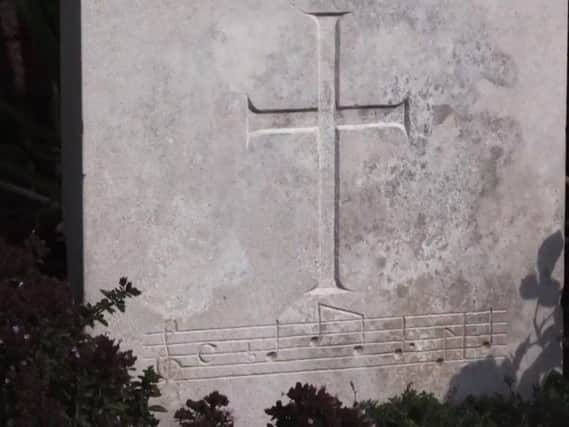Hitting all the right notes with Blackpool tribute to war victim


What’s the connection between the Blackpool Tower Circus’ musical director and a talented violinist who was killed in the First World War?Gifted violinist Hugh Gordon Langton was born in London in 1885 and studied the violin with some of the most famous music professors of the era.A Freemason, like his father, he joined the Fourth Battalion of the London Regiment during World War One.Second Lieutenant Langton was killed during the Battle of Passchendaele on October 26, 1917.He was buried in Poelcapelle British Cemetery, in West Flanders, Belgium.Hugh Langton’s Commonwealth War Graves Commission headstone is unusual in that it had musical notes engraved on it.When World War One researcher Lucy London – author of Female Poets, Forgotten Poets, Inspirational Women and fascinating Facts of the First World War – saw a photo of the gravestone, she wanted to know what the musical notes were.Speculation on the Commonwealth War Graves Commission website suggests they could be from the popular song After The Ball. But Lucy said she wasn’t convinced.Lucy said: “I asked my friend, David Windle, who is a very talented musician, if he could perhaps identify the notes and sent him a copy of the photo of Hugh’s headstone.“David, who is the musical director of the Tower Circus in Blackpool, said although there was a similarity, the notes were not actually from After The Ball.“David wondered if they could have been composed by Hugh and was prompted to research his life story. He was also inspired to compose a piece of music with a violin cadenza in honour of Hugh Gordon Langton, he has called it Langton’s theme.”David said: “After seeing the notes, I played them and felt inspired to develop the melody and created a work of my own based on them.“Langton was – in civilian life – a brilliant violinist, who had studied with eminent professors before the Great War, in Prague, Russia and Germany.“The sentiment in the song certainly fits in with the sorrow which must have been felt by his parents and his wife – he was only 32 and newly married at the time of his death, but the tune is in a minor key and the time signature is wrong, if the theory behind the song After The Ball is to believed.“A few things I have considered include the fact the melody could be one of Langton’s own compositions, or as he studied in Eastern Europe, it’s possible the melody was something we heard when he was there and wrote it down.“There is also a suggestion that Langton’s mother was Jewish and the melody could perhaps be of Hebrew origin.“But I don’t feel this theory holds much water as I asked a Rabbi at the synagogue in St Annes if he recognised it and neither he, nor his colleagues, could identify it.“The stonemason who carved the notes on the headstone must have been musically literate as the stems of the notes are the correct way round. Often when music notes are placed on items such as posters, or birthday cakes, they are wrongly placed.“Either way, I felt inspired to write the melody and it has been played by Helen Andrews – the leader of Blackpool Symphony Orchestra and myself.”Singer Lynne Fox has also produced a short video to accompany the music David composed.The local brass band at Harebeke, near the cemetery in Belgium where Langton is buried, also composed a piece of music which they play every year at Hugh’s graveside. In October last year, to mark the centenary of his death, 45 musicians from the Deerlijk Brass Band performed a special #HoldHighTheTorch tribute.